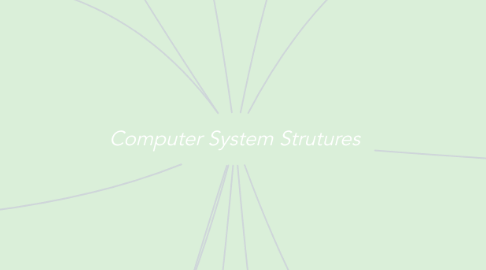Computer System Strutures
저자: max heng

1. Storage Hierachy -Speed -Cost -Volatily
2. Caching magnetic disk->main memory->cache->hardware register
3. Modes of Operation User Mode(1): 1.user program executes in user mode. 2.certain areas of memory are protected from user access. 3.certain instructions may not be executed. Kernal Mode(0): 1.monitor executes in kernal mode. 2.privileged instructions may be executed. 3.protected areas of memory may be accessed.
4. I/O Protection -All I/O instructions are privileged instruction; user program cannot issue I/O instructions directly. -Must ensure that a user program could never gain control of the computer in monitor mode. (as part of its execution, stores a new address in the interrupt vector)
5. Memory Protection -The computer systemn must provide memory protection at least for the interrupt vector and the interrupt service rountines. -In order to have memory protection, two registers are used to determine the range og legal addresses aprogram may access -Memory outside the difined range is protected.
6. Hardware Address Protection -When executing in kernal mode, the operating system has unrestriced access to both monitor and user's memory. The load instructions for the base and limit registers are privilged instructions.
7. CPU Protection Timer - interrupts computer after specified period to ensure operating system maintains control over CPU. -When timer interrupts, control transfer to the operating system. -Load-timer is a privileged instruction.
8. Interrupt Handling -When the CPU is iterrupted, it stops what it is doing and immediately transfer execution to a fixed location. -Interrupt vector provide the address of the interrupt servics routine for the interrupting device.
9. Computer-System Operation -A general-purpose computer system consists of one or more CPUs and a number of devics controllers. -Each device controller has a local butter. -The CPU and device controllers can execute concurrently.
10. Interrupt Handling -Separate segments of code determ,ine what action should be taken for each type of interrupt. -The OS perserves the state of the CPU by storing registers and the program counter. -After the interrupt is serviced, the saved return address is loaded into the program counter.
11. Asynchronous I/O Stricture -After I/O starts, contol returns to user program without waiting for I/O completion. System call - request to the operaitng system to allow user to wait for I/O completion. Device- status table contains entry for each I/O device indicating its type, address, and state. Operating system indexes into I/O device table to determine device status and to modify table entry to include interrupt.
12. Storage Structure Main memory - only large storafe media that the CPU can acess directly. Secondary storage - extension of main memory that provides nonvolatile storage capacity.


